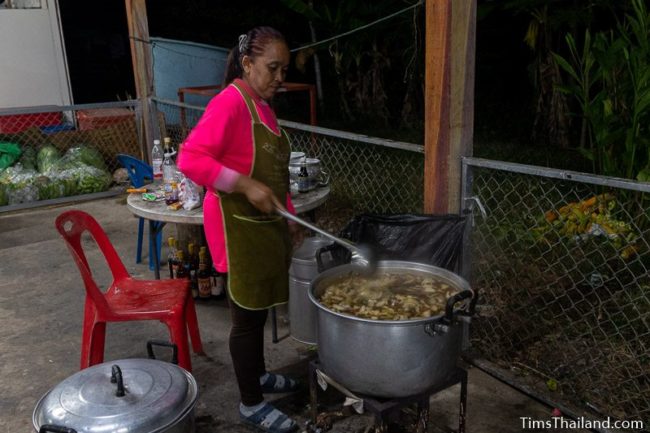Day 2 – The First Full Day of Boon Khao Kam
Less than seven hours later, at 3.30am, the gong called the monks back to the lahn-tam. (The cooks lit their stoves to make breakfast and lunch about this time too.) With just a few exceptions, notably the special events on days four and eight, days three to nine followed the same schedule as this day.
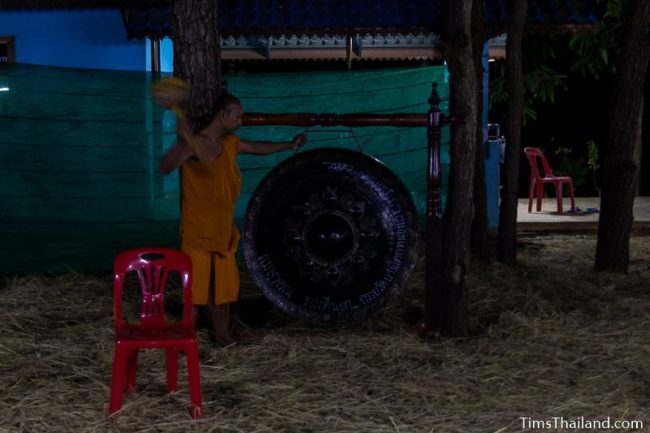
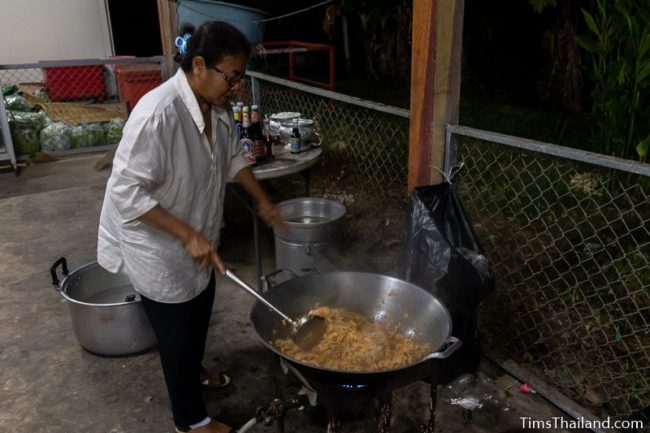
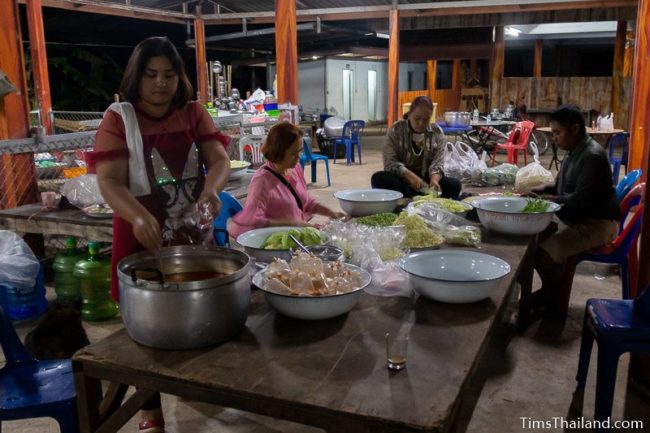
Predawn
The first of the four daily Boon Khao Kam rituals began at 4am with nearly an hour and a half of chanting. This was followed by the mae/paw khao and the monks leading the ceremony doing thirty minutes of meditation. The pariwat monks, however, went back to their “forest” during the meditation time and waited to rap arun (“receive the dawn”) – when they could see the lines on their palm, the night was over and the next morning had begun. Then the monks could gep wat, a formality that allowed them to come out of their solitude for the day’s activities.
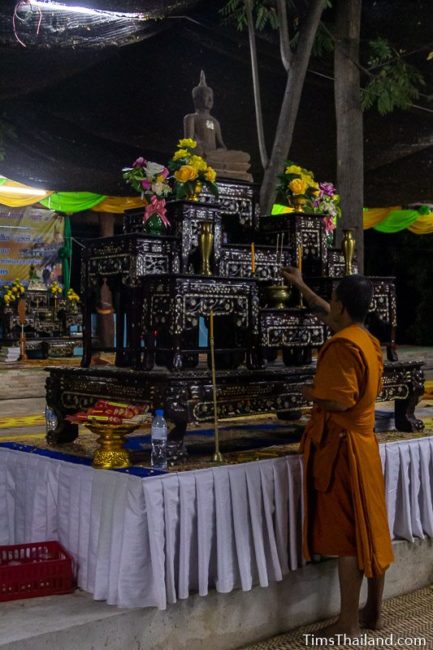
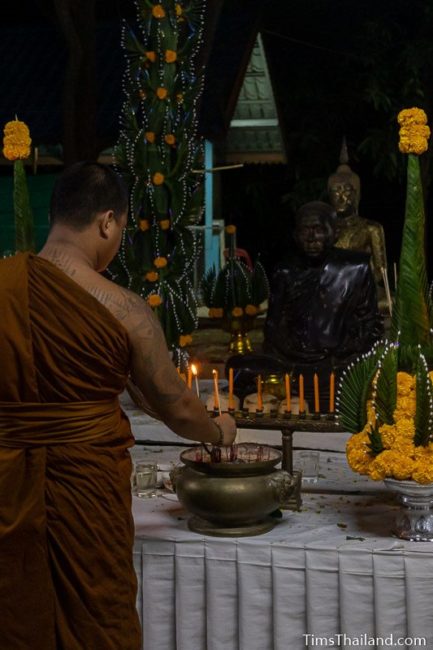
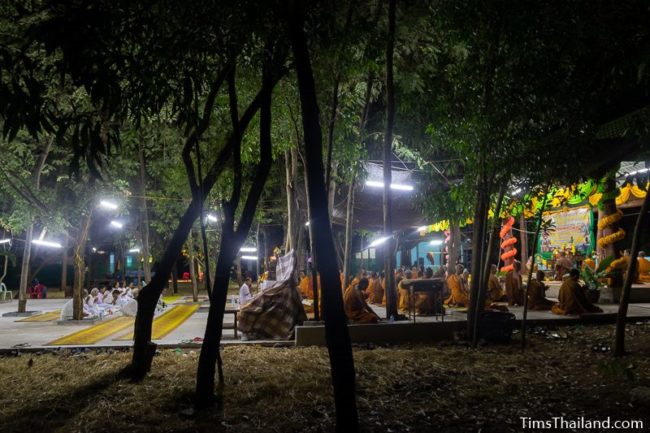
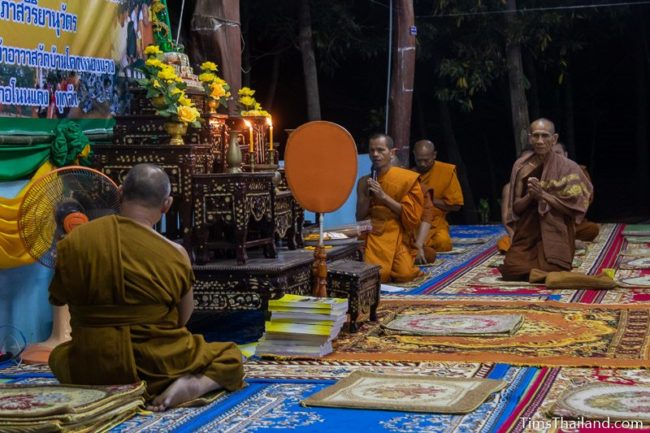
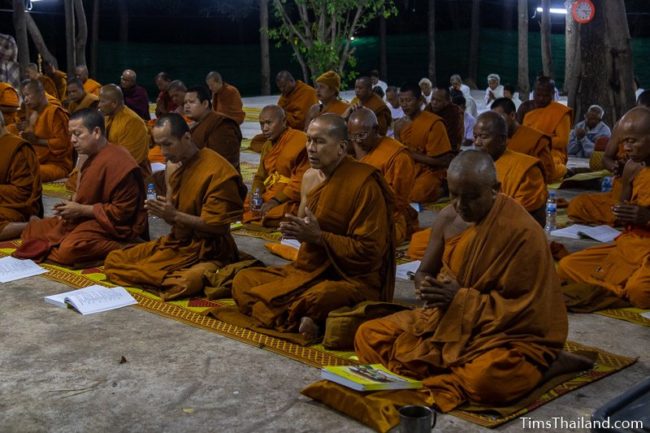
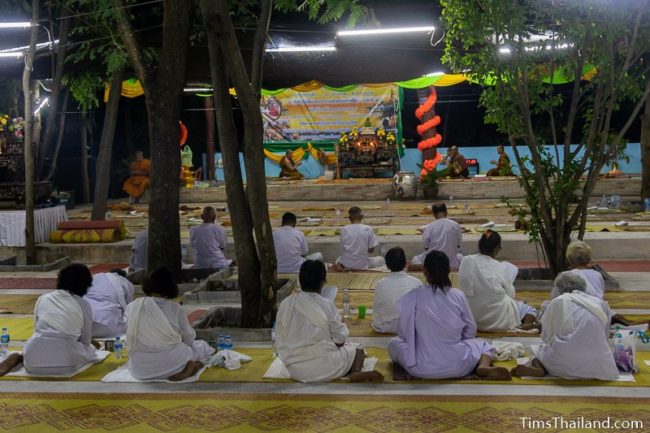
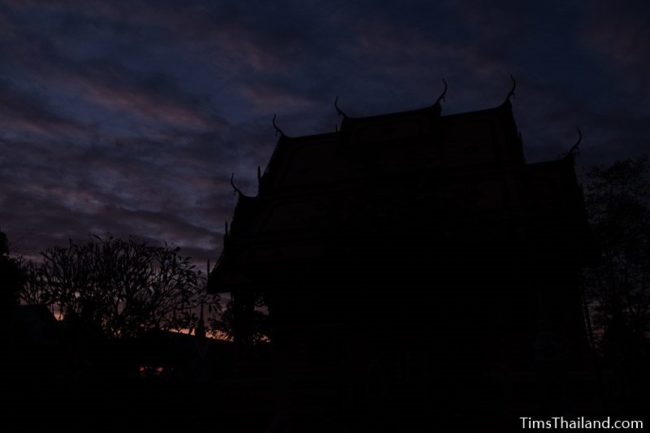
A little before 6am the chanting began again and the gong summoned the pariwat monks back to the lahn-tam to join in. Soon after, everyone was served khao tom (boiled rice soup) and bla-tong-go (fried doughnuts) –rice soup was served every day, but second-day dishes differed and also included things like giaw-nam (dumpling soup) – at their seats. After eating, there were quick announcements about the rest of the day and a few more short chants; at 6.30am the early-morning meeting was over.
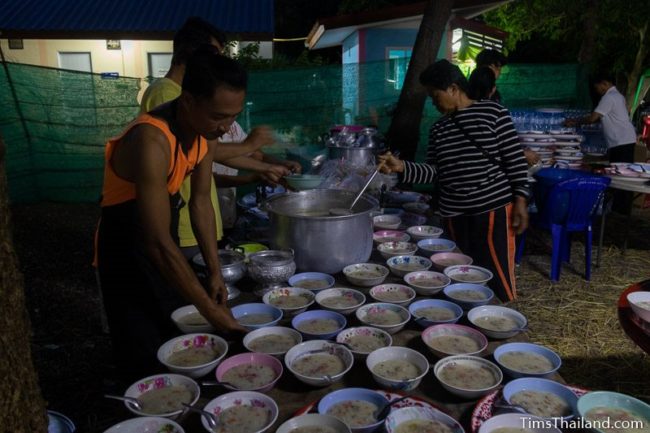
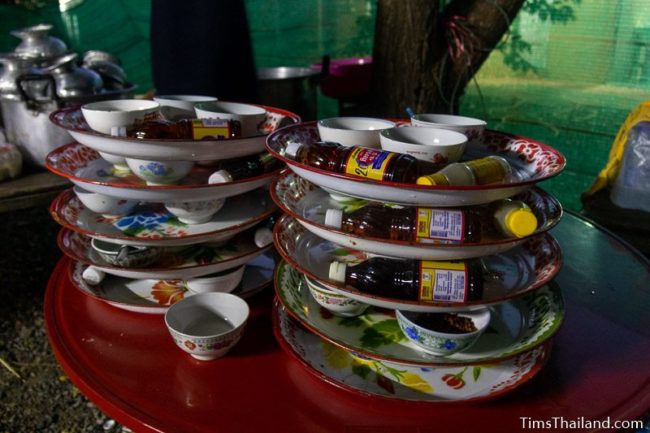
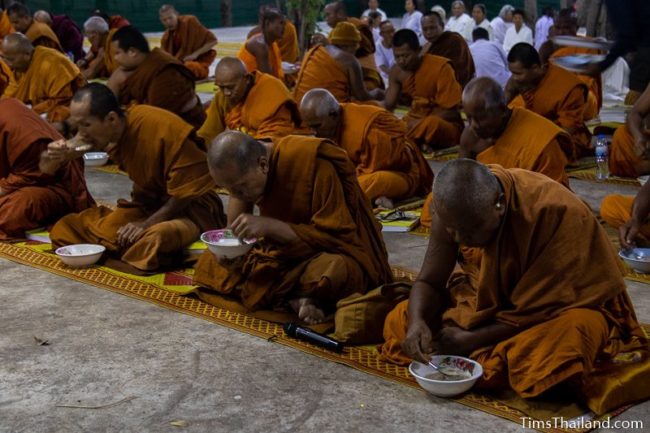
While the monks and the mae/paw khao got a break, the cooks did not. They got started right away on cooking lunch.
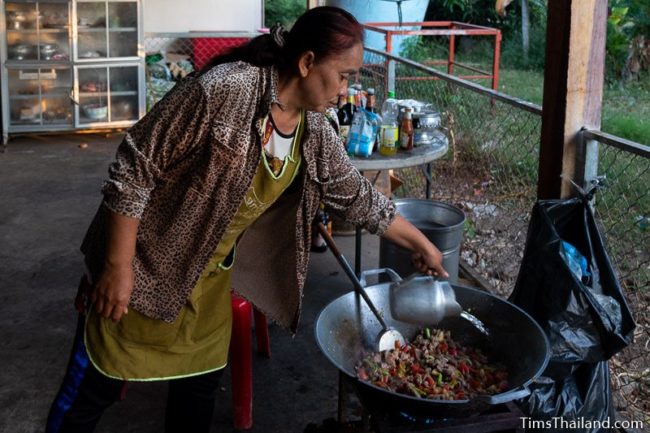
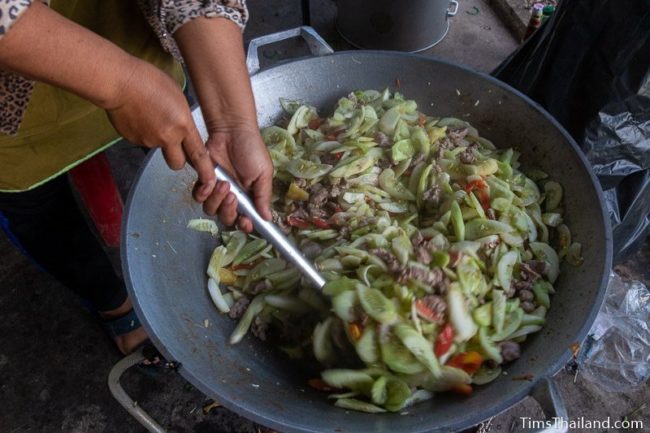
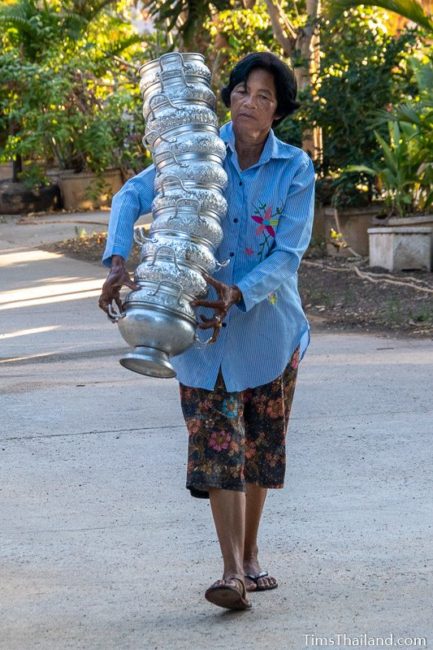
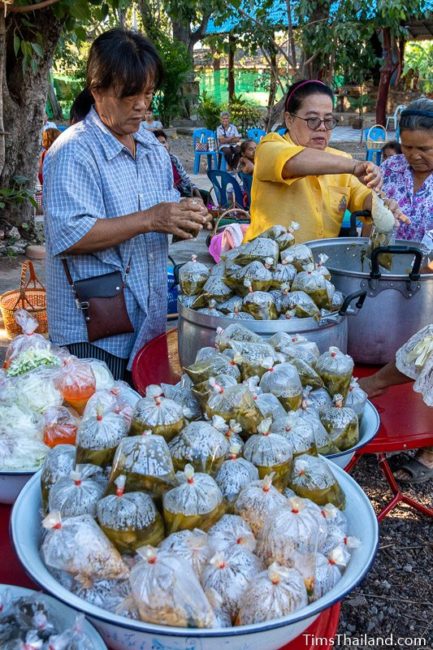
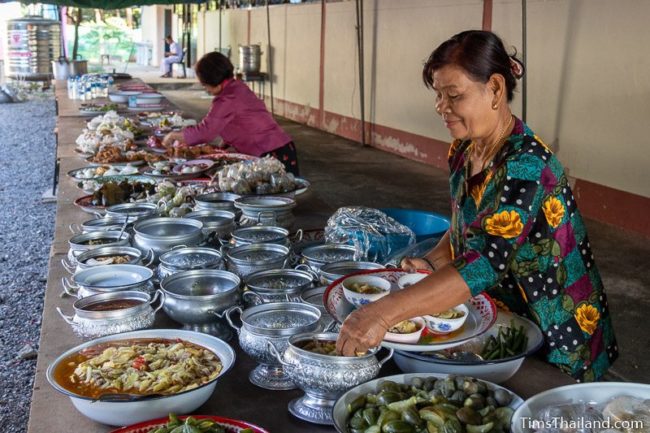
Morning
The day’s second session – a bit of chanting and an hour-long sermon – started at 8.30am. This is the only part of the regular Boon Khao Kam day that villagers attended; it was their chance to make merit by supporting the pariwat monks. The sermon, by a guest monk from another temple (a different monk spoke each day), was about the significance of Boon Khao Kam and the importance of making merit in order to have a good life. Other sermons on the following days also focused on encouraging people to make merit.
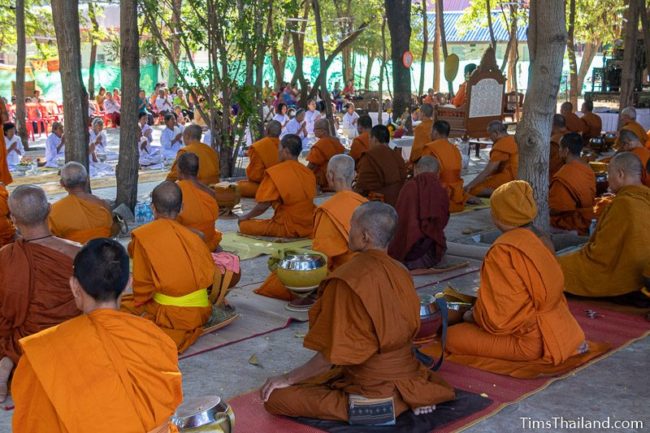
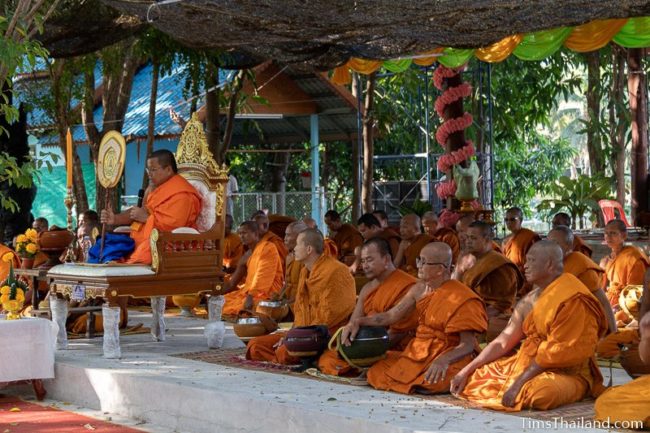
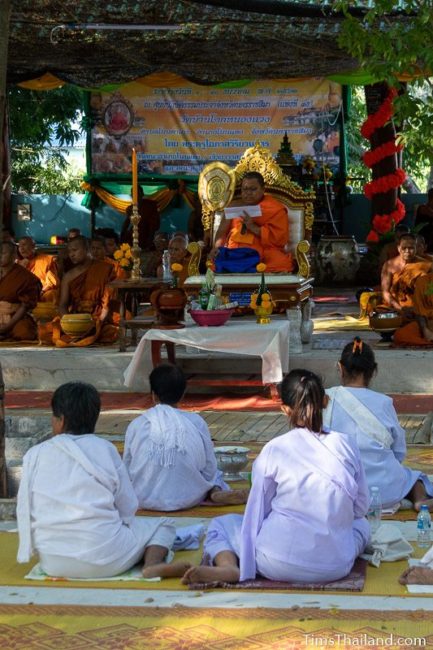
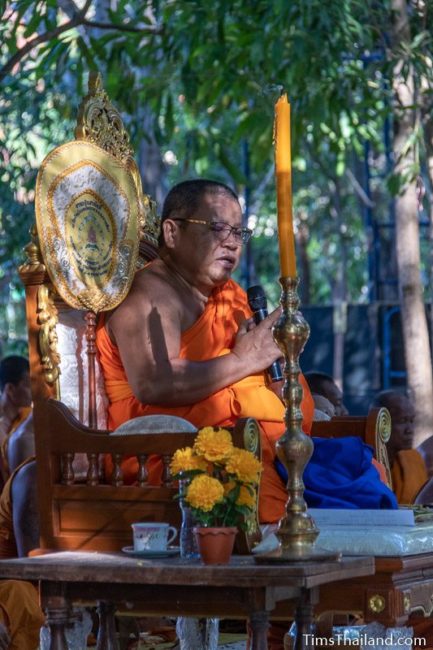
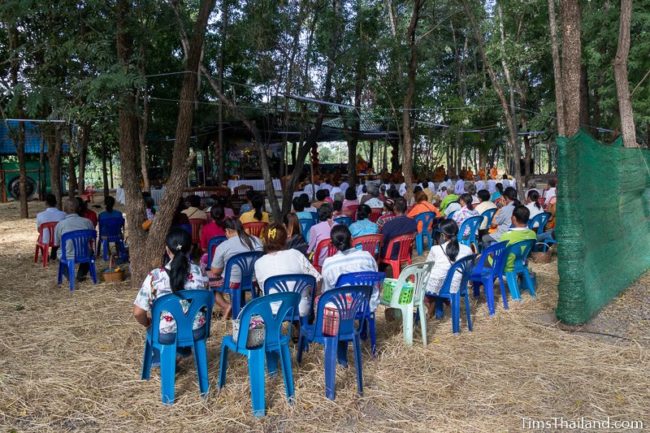
After the sermon the guest monk was given a gift of a money tree with useful things like noodles, fruit, or toothpaste in its basket. Then amidst seven short chants people blessed the rice they would soon give to the monks and also some gruat nam water to pass merit onto their ancestors. Not many people did the latter because, I was told, it’s considered overkill to do it frequently and most people planned to do it on the last day.
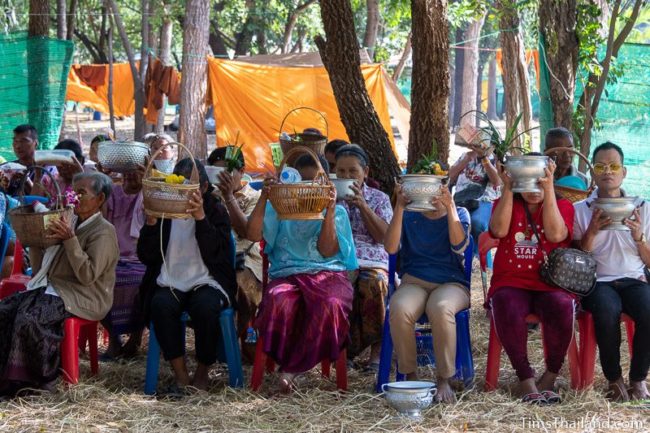
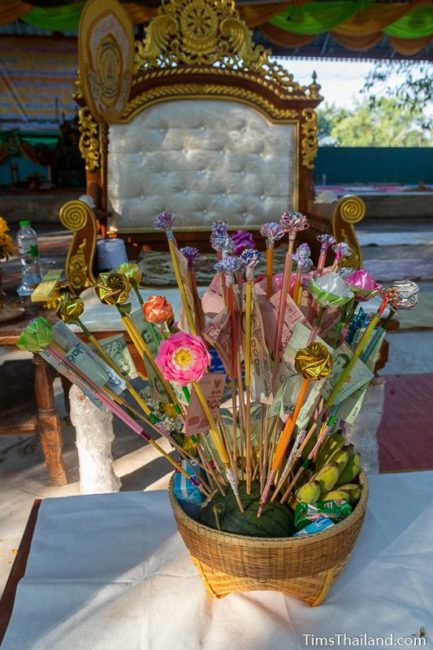
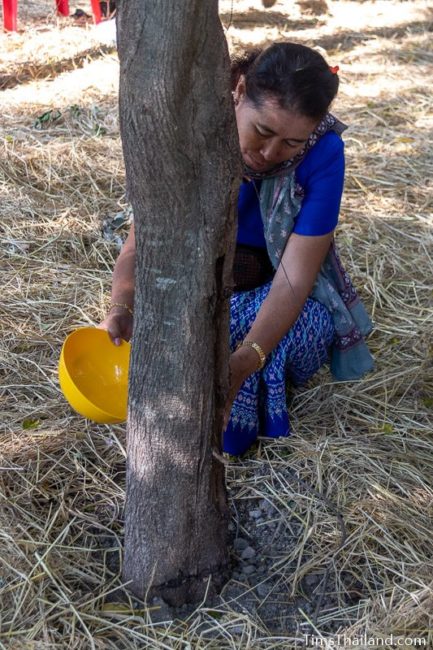
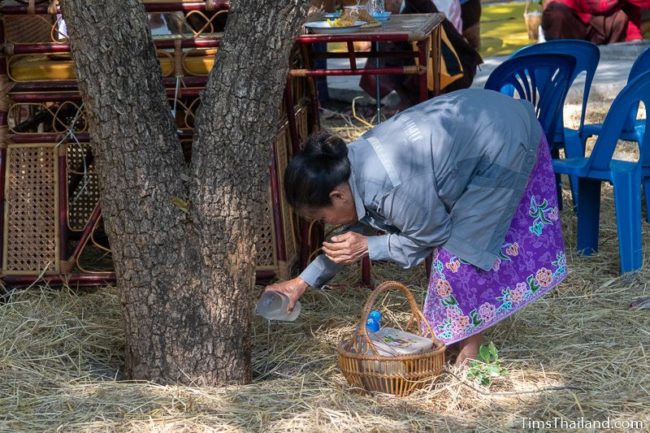
Then, at about 10am, it was time for the monks to collect alms. Because the pariwat monks don’t leave the temple at any point, the people came to them rather than having the usual walk through the village. There were about two hundred people giving food this day, though on most other days it was about half that. Schools sent students on some of the days.
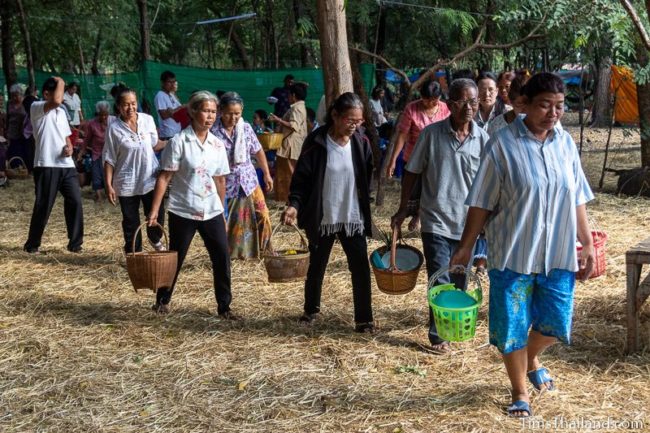
As is the tradition of most Isan people, only rice (And it should be noted that although the people of Ban Khok Nong Waeng are kon isan, they eat regular rice rather than sticky rice; the same as their kon khorat neighbors do.) was put into the alms bowls. After walking the rice line, the monks took meats, curries, fruits, vegetables, desserts, drinks, etc. – both cooked at the temple and brought from people’s homes – off of tables. The abbot walked in front followed by helper monks and then the pariwat monks who were supposed to walk in their ranked order, but many didn’t pay attention to their place in line.
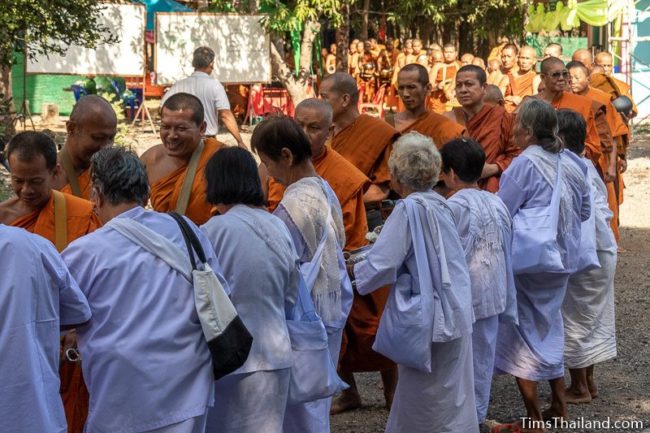
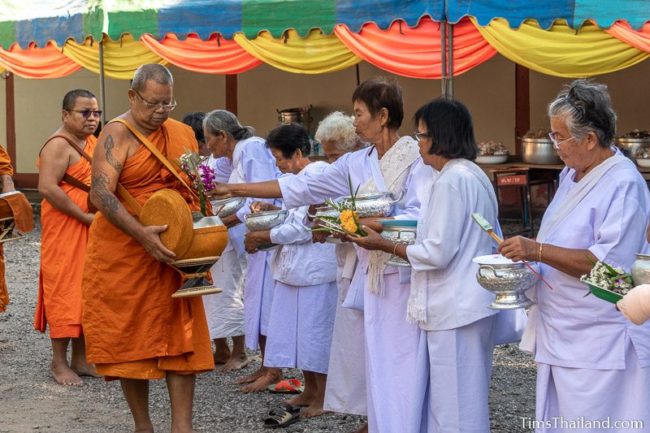
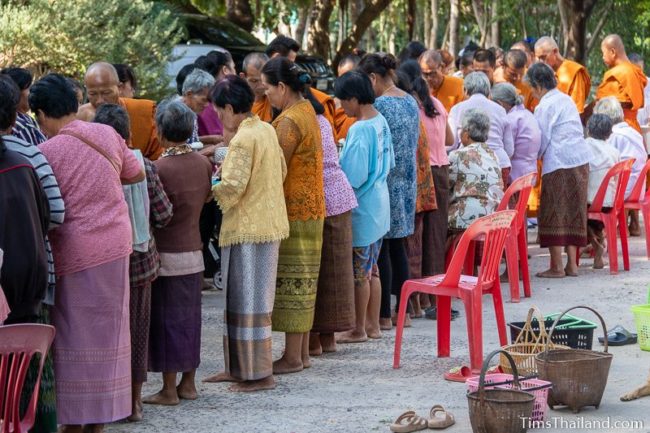
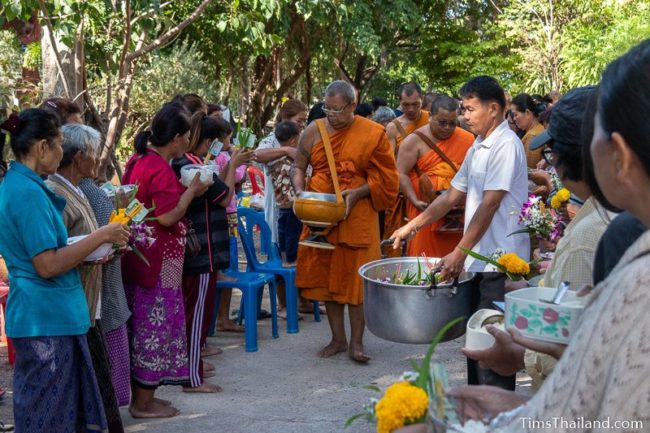
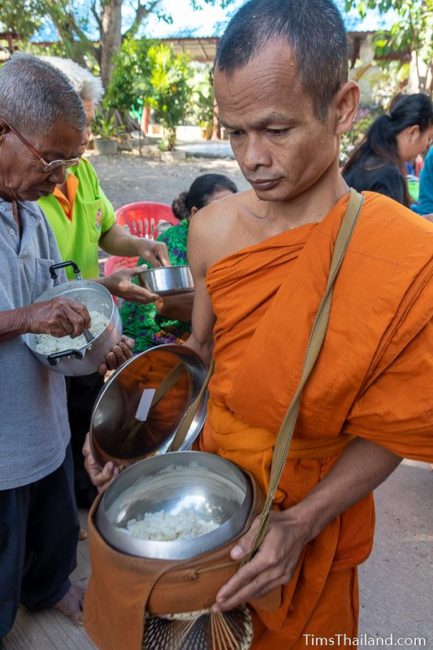
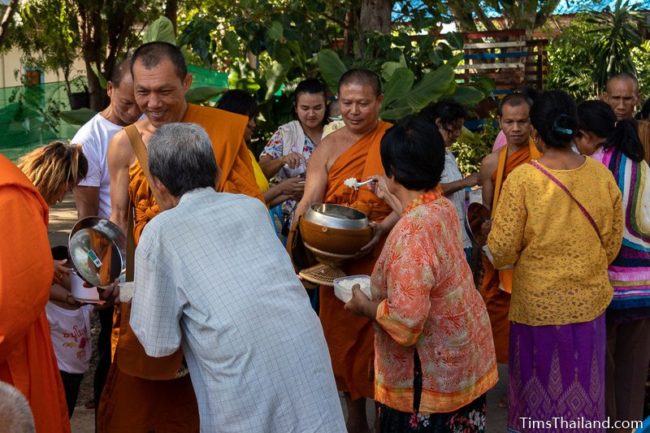
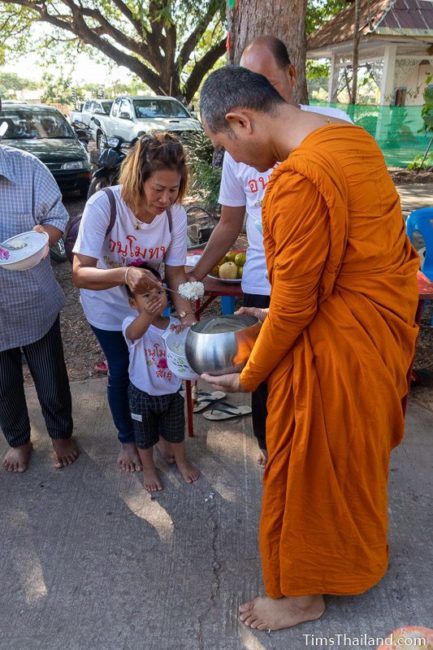
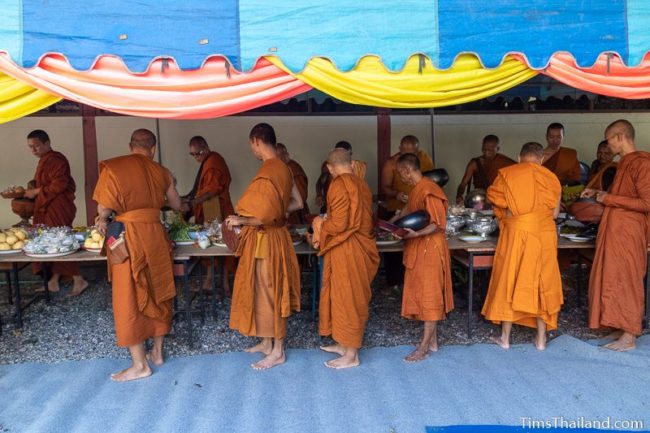
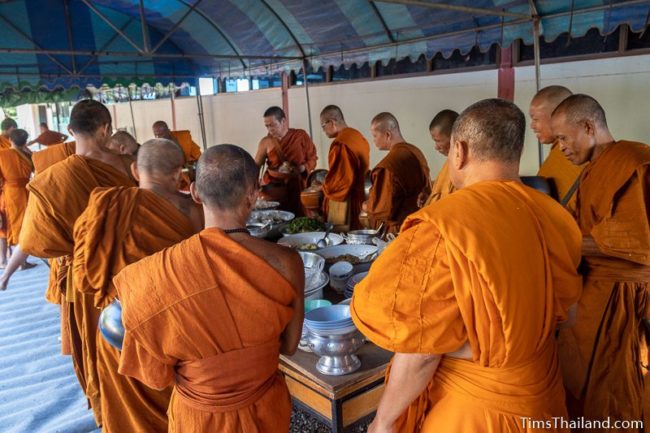
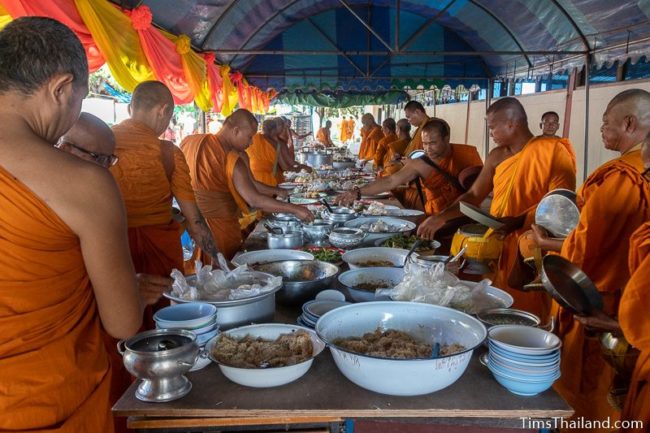
After the monks were done, the mae/paw khao collected food and then the villagers scooped up all that remained. The monks ate in the “forest” and the villagers at home. It was only now that the cooks could take a break.
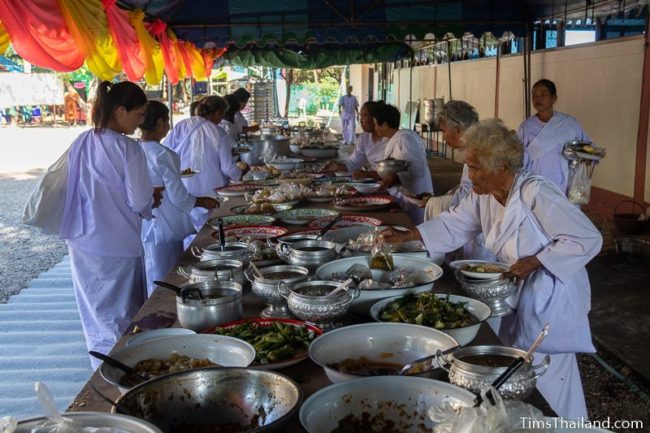
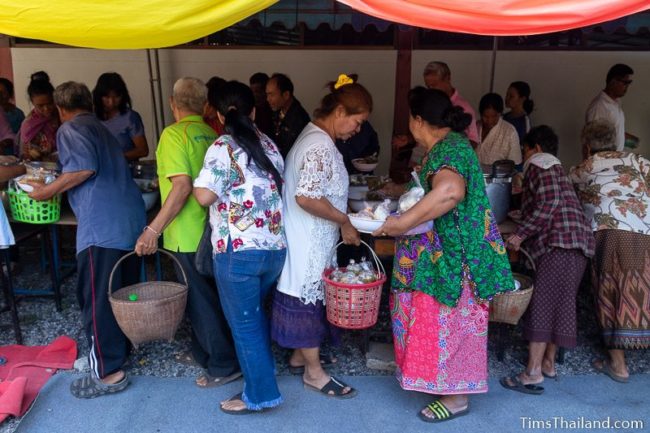
Afternoon
The monks and mae/paw khao were back in the lahn-tam at 1pm for an hour of chanting, thirty minutes of meditation, and a further fifteen minutes of chanting. On day nine this afternoon session was cancelled so the monks could wash their robes and prepare for departure the next day. Most also used the free time on day nine to shave their heads since the day after Boon Khao Kam ended was a monk day.
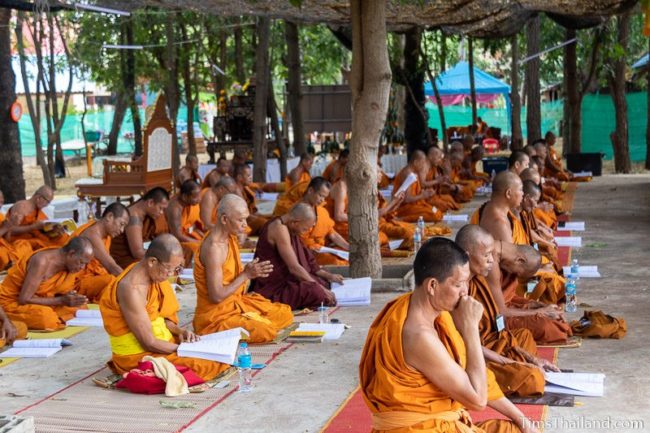
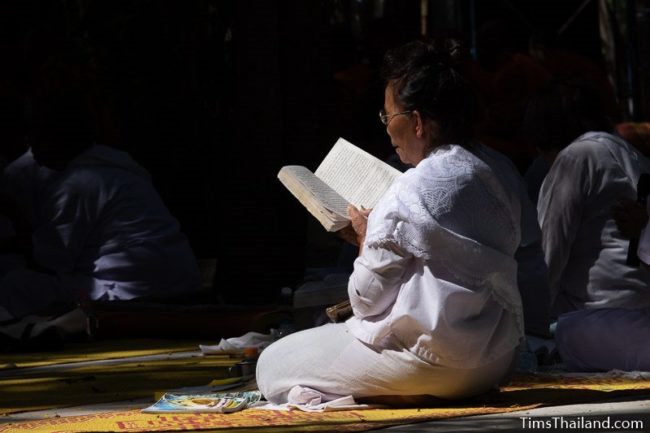
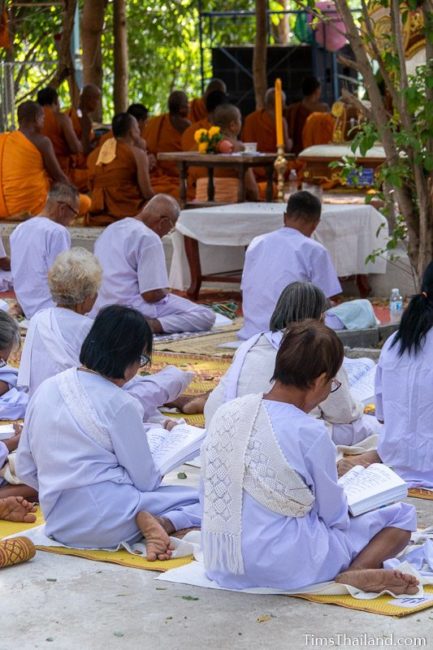
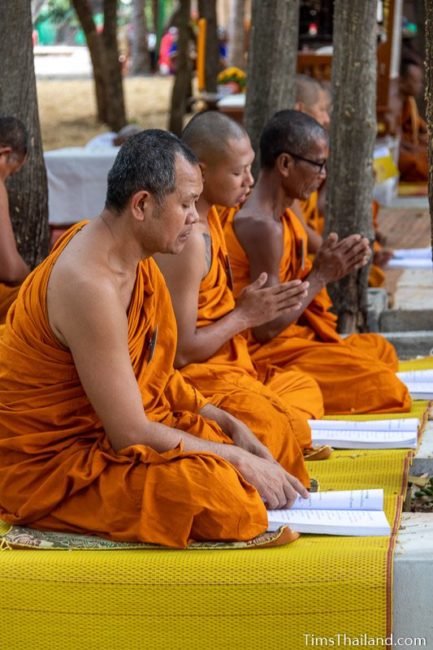
The cooks were back in the kitchen around 2pm to prep the next day’s breakfast and lunch.
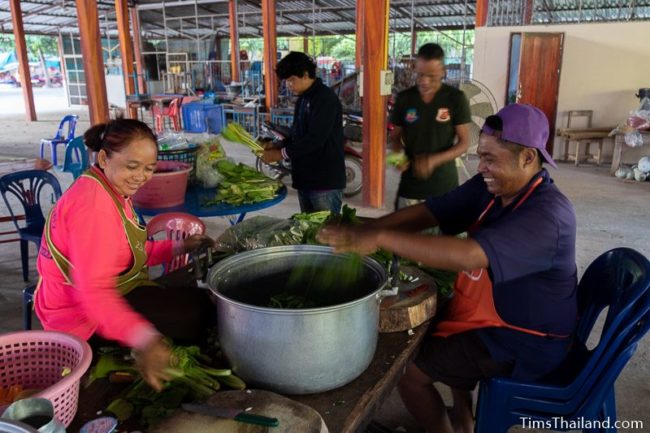
Evening
The first order of business – so it would be done before dark – for the fourth and final session of the day was walking meditation. The monks and mae/paw khao gathered at the lahn-tam shortly before 5.30pm, sunset time, for five minutes of chanting before making three slow laps of the large concrete yard in front of the temple. This took about twenty minutes and ended shortly before darkness fell.
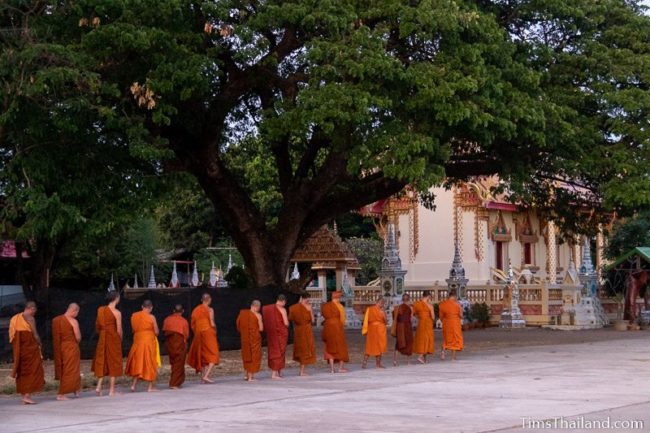
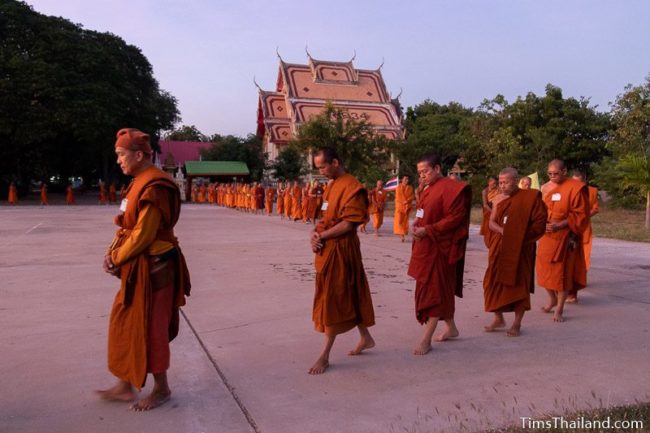
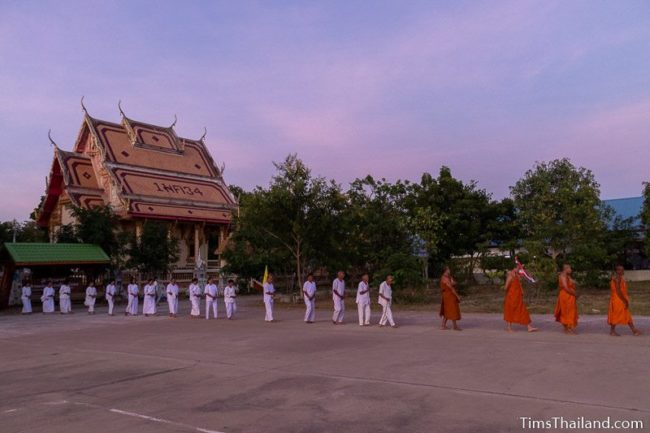
Then about 6pm, an hour and a half of chanting began, followed by half an hour of meditation. Then soy milk, sour milk, fruit juice, and other drinks were handed out while the abbot made announcements and shared words of wisdom, which were followed by five final minutes of monk-only chanting (the mae/paw khao went back to their tents) and the pariwat monks bawk wat again. The meditation was skipped on day nine to give the monks a good night’s rest before having to travel home the next day.
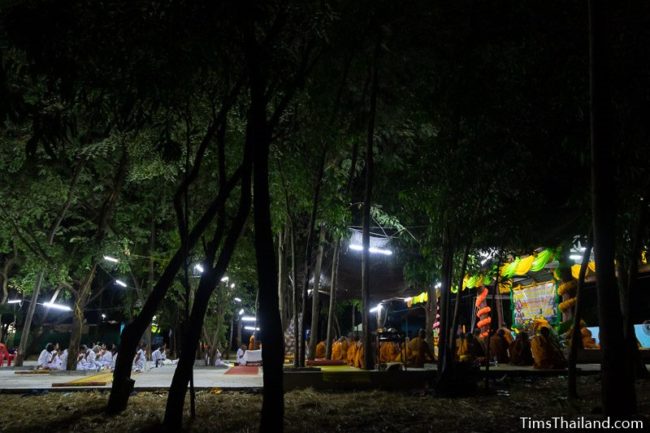
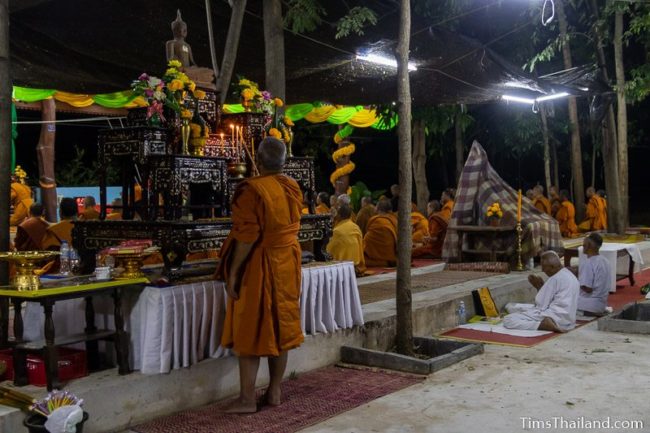
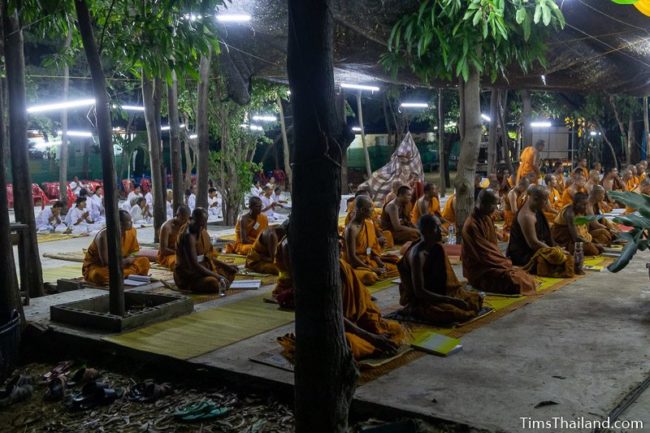
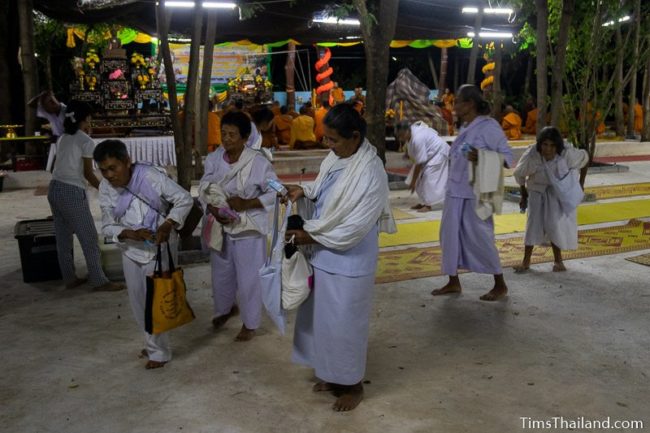
While all the monks and mae/paw khao headed to sleep, the cooks were still at work, not leaving until about 10pm each night.
